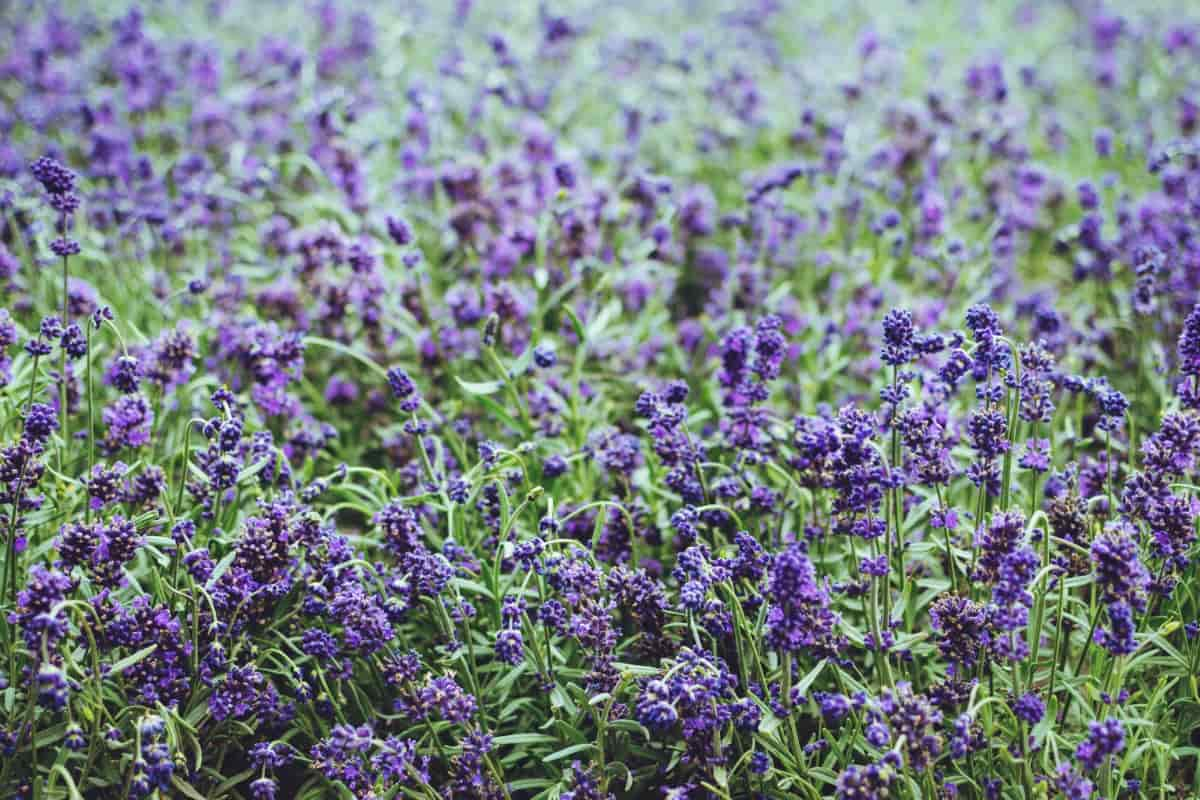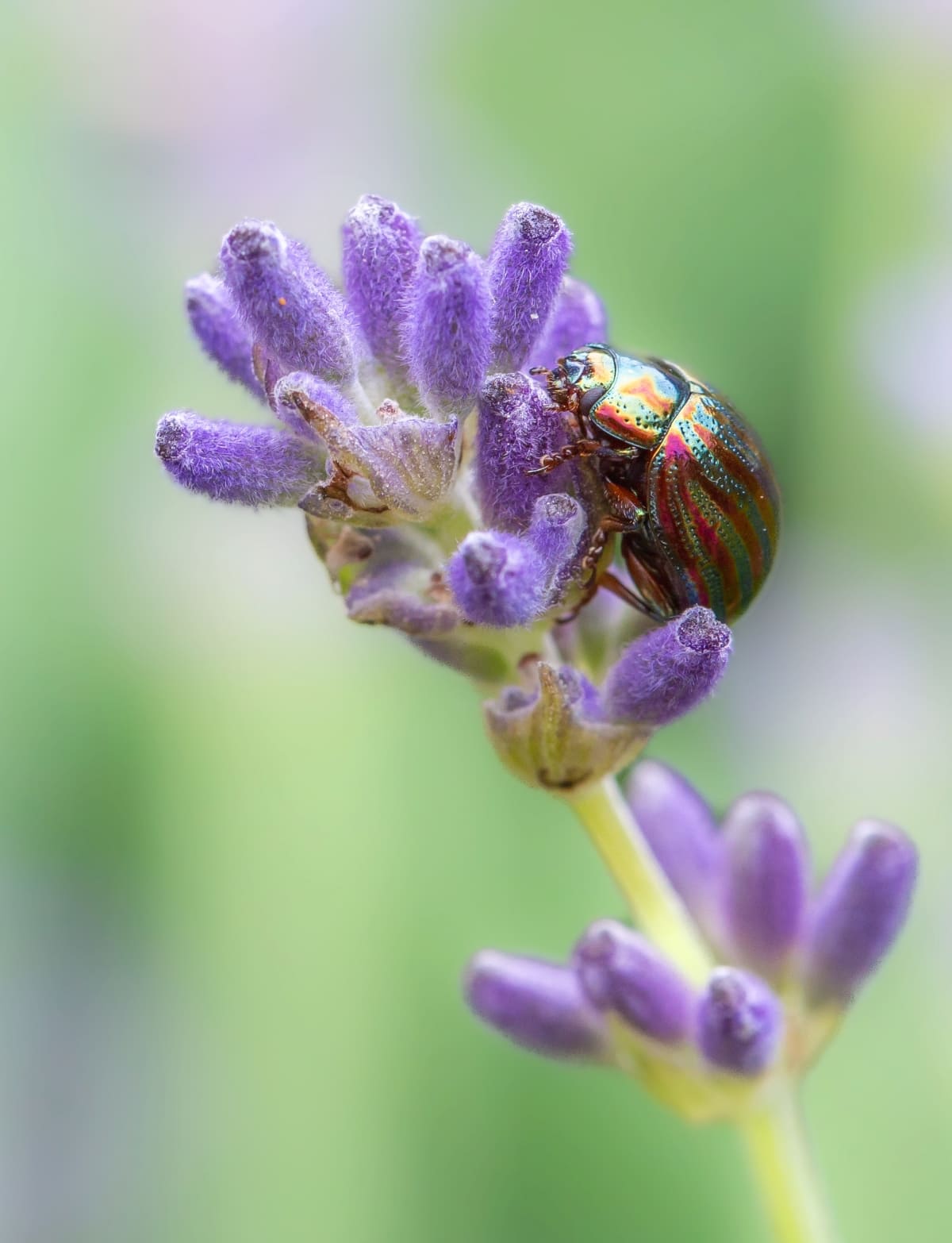Welcome to the world of lavender cultivation and the effective management of pests. In this guide, we will explore natural and organic methods to protect your lavender crops from pests, ensuring the health and vitality of your plants. To maintain your beautiful lavender fields, it’s essential to have a good understanding of lavender plants and to practice eco-friendly gardening. Let’s delve into safe, long-lasting ways to help your lavender thrive.

How to Control Lavender Pests Naturally
Understanding Lavender Pests: Identifying Common Pests and Their Damage
Lavender plants are susceptible to a range of pests that can cause harm and affect their growth. To effectively combat these pests, you must first recognize them. Two common pests that target Lavender are aphids and the lavender bud moth. Aphids are tiny insects that consume the sap of plants and can distort the growth of Lavender. They also excrete a sticky substance, which can attract mold.
The lavender bud moth is a caterpillar that can damage lavender buds, leading to disfigured and unhealthy blooms. Early detection and swift action are crucial in preventing damage. To safeguard your lavender crops, use natural remedies like neem oil and companion planting with pest-repelling herbs. These measures will help protect your cherished lavender plants, ensuring they remain vibrant and long-lasting.
Prevention is Key: Implementing Effective Strategies to Control Lavender Pests
Preventing pests is crucial for maintaining the health and beauty of your lavender fields. To effectively deter pests, select the right plant varieties and provide adequate spacing between them, reducing their vulnerability. Regularly inspect your lavender plants for signs of problems like aphids or lavender bud moths, and promptly remove any damaged leaves.
Utilize natural predators such as ladybugs as a biological control measure. Keep your fields clean by removing plant debris and ensuring proper airflow to deter pests. Chemical treatments like neem oil or insecticidal soaps should be a last resort. Taking proactive measures and identifying problems early are the best ways to maintain a pest-free and thriving lavender crop.
Natural Remedies for Lavender Pest Control: Harnessing the Power of Companion Planting
Planting companion plants is a simple and efficient method to repel pests from lavender plants. Planting marigolds between lavender rows can help keep pests like aphids and bud moths at bay. The aromatic herbs such as garlic and chives also naturally deter pests and contribute to healthier soil. Beneficial insects like ladybugs, which feed on aphids, are valuable allies. By creating a diverse and balanced ecosystem around your lavender crops, you can keep your fields healthy and beautiful without resorting to chemical pesticides.
Organic Treatments for Lavender Pests: Utilizing Safe and Environmentally Friendly Solutions
- Neem Oil: A natural insect repellent that disrupts pest feeding and their life cycle.
- Diatomaceous Earth: A fine powder that dehydrates and kills pests upon contact. Sprinkle it around your lavender plants.
- Companion Planting: Plant garlic, chives, or marigolds near your Lavender to deter pests with their natural aromas.
- Beneficial Insects: Attract ladybugs, lacewings, and parasitic wasps to your garden; they prey on lavender pests.
- Organic Soaps: Use insecticidal soaps to control soft-bodied pests like aphids. These soaps are gentle on the environment.
In case you missed it: How to Control Petunia Pests Naturally: How to Get Rid of Them with Natural and Organic Treatment

Creating a Healthy Garden Ecosystem: Attracting Beneficial Insects to Combat Lavender Pests
Establishing a healthy garden ecosystem that attracts beneficial insects is essential for natural pest control in your lavender fields plant nectar-rich flowers like marigolds and daisies to provide food sources for beneficial insects. Maintain a diverse range of plant species to offer various habitats and promote biodiversity.
Beneficial insects include parasitic wasps, lacewings, and ladybugs. Crucial for controlling pests like aphids and bud moths. Avoid using chemical pesticides, which can harm these helpful insects. Additionally, it provides water sources and reduces light pollution at night to further support beneficial insects, creating a balanced ecosystem that safeguards your Lavender naturally and effectively.
Homemade Pest Repellents: DIY Recipes to Deter Lavender Pests Naturally
- Soap and Water Solution: Mix two cups of water with one tablespoon of dish soap. This mixture can be sprayed on lavender plants to repel aphids and other soft-bodied insects.
- Ammonia Solution: Combine one part of ammonia with three pieces of water and spray it near the plants to deter snails and slugs.
- Crushed Eggshells or Diatomaceous Earth: Place crushed eggshells or diatomaceous earth around the base of lavender plants to keep pests away. These methods are eco-friendly, safe for plants, and a natural way to protect your lavender crops from pests.
Physical Barriers and Traps: Physical Methods to Keep Lavender Pests at Bay
Physical barriers and traps effectively deter pests from harming lavender plants. Implementing these techniques ensures the safety of your plants while minimizing the need for chemical interventions
- Copper Barriers: Wrapping copper tape around plant containers or beds repels slugs and snails, common lavender pests.
- Row Covers: Use row covers to shield lavender plants from flying insect pests such as aphids and bud moths.
- Sticky Traps: Deploy yellow sticky traps to capture flying insects that may harm your Lavender.
- Collars: Install collars made of cardboard or plastic around plant stems to deter cutworms and root-feeding insects.
- Handpicking: Regularly inspect your lavender plants and handpick any visible pests, such as caterpillars or beetles, to prevent infestations.
Soil Management Techniques: Enhancing Soil Health to Reduce Lavender Pest Infestations
- Crop Rotation: Regularly changing the planting location of Lavender disrupts the life cycles of soil-borne pests.
- Compost Enrichment: Adding organic compost improves soil fertility, making conditions less favorable for pests.
- Natural Predators: Promote helpful insects like ladybugs and nematodes that prey on lavender-damaging pests.
- Proper Drainage: Well-drained soil prevents waterlogging, which can attract pests and diseases.
- pH Balancing: Maintaining the soil’s pH at an optimal level for lavender (around 6.8) can prevent pest issues.
In case you missed it: How to Control Berry Bush Pests Naturally: How to Get Rid of Them with Natural and Organic Treatment

Integrated Pest Management (IPM) for Lavender: A Holistic Approach to Pest Control
- Pest Identification: Accurate pest identification is the foundation of IPM. Identify specific pests that affect your lavender plants.
- Monitoring: Regularly inspect your Lavender for pests. Early detection allows for timely intervention.
- Cultural Practices: Implement good gardening habits, such as proper watering, spacing, and soil care, to create a healthier lavender environment that is less attractive to pests.
- Biological Controls: Encourage natural predators like ladybugs, lacewings, and beneficial nematodes to control pest populations.
- Mechanical Controls: Handpick and remove pests when possible or use traps to manage their numbers.
Summary of Lavender Pest Control with Natural and Organic Treatment
| Pest/Disease | Organic Treatment |
| Aphids | Use a strong stream of water to dislodge aphids from plants. Introduce beneficial insects like ladybugs or lacewings. |
| Lavender Bud Moth | Handpick and destroy caterpillars and affected buds. Encourage natural predators like birds in the garden. |
| Bacterial Soft Rot of Lavender | Remove and destroy infected plant parts. Improve drainage to prevent waterlogged soil. |
| Lavender Blight (Southern), “White Mold” | Prune affected leaves and maintain good air circulation. Apply a copper-based fungicide. |
| Snails and Slugs | Use physical barriers like copper tape or diatomaceous earth to deter snails and slugs. Handpick and remove them from plants. |
| Cutworms | Install collars made of cardboard or plastic around plant stems to deter cutworms. |
| Root-Feeding Insects | Implement proper soil drainage and compost enrichment to create unfavorable conditions for root-feeding insects. |
Frequently Asked Questions (FAQ) on Lavender Pests
What is Lavender?
Lavender is a fragrant and visually appealing herb highly valued for its aromatic flowers and essential oils. It is widely used in cosmetics, perfumes, and as a culinary herb.
How Many Species of Lavender Are There?
There are over 45 recognized species of Lavender, with many cultivated varieties and hybrids available.
What are the Standard Colors of Lavender Flowers?
Lavender flowers range from pale purple and violet to blue and even pink. They are known for their distinctive and soothing scent.
When Does Lavender Bloom?
Lavender typically blooms in late spring and early summer, depending on the variety and climate.
In case you missed it: How to Control Iris Pests Naturally: How to Get Rid of Them with Natural and Organic Treatment

Conclusion
It is advised to employ natural and organic pest management techniques to keep pests away from your lavender crops. Aphids and bud moths are common issues to identify. Choose appropriate plant species and make sure the correct spacing is maintained.
Use physical barriers, companion planting, DIY fixes, organic treatments, and soil management strategies. Combine mechanical, cultural, and biological measures to implement Integrated Pest Management (IPM). This environmentally responsible method protects your lavender crops’ health and beauty without endangering the ecosystem.
- Deworming Schedule for Dogs/Puppies: A Beginners Guide
- How to Prevent and Control Parasites in Goats
- Beneficial Insects in Pest Management
- Natural Solutions for Pest Control in Flower Gardens
- Types of Fungicides Used in Agriculture
- Common Issues in the Fruit Development Stage of Pomegranate Farming
- Fruit Development Issues in Papaya: Easy Solutions and Treatment
- Soil-Borne Diseases and How to Protect Your Plants
- Practices to Prevent Disease Spread in the Garden